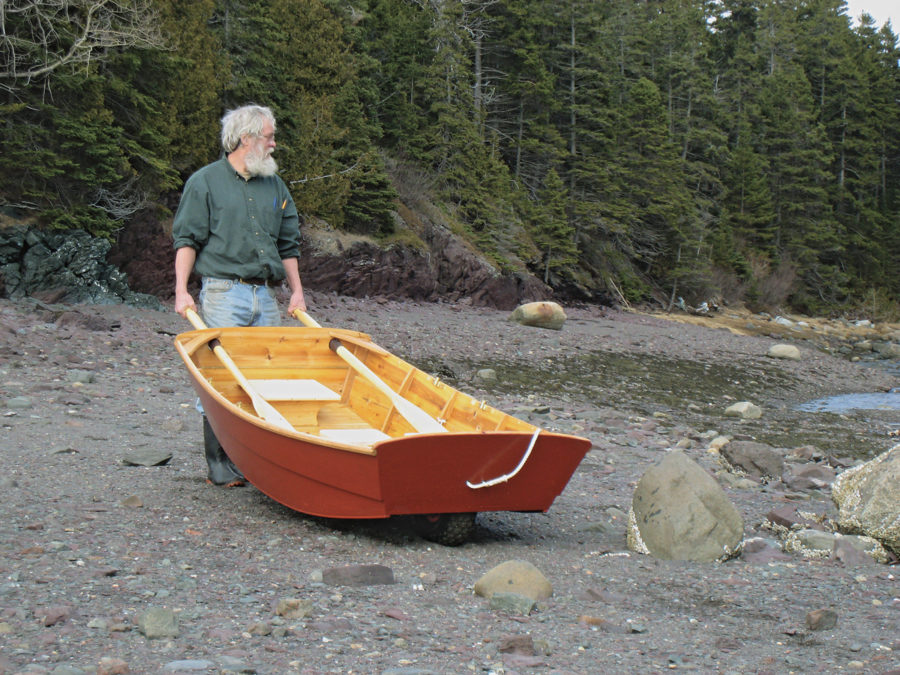Small-boat designer and builder Daniel Noyes launched his Beachcomber-Alpha dory—with some alterations—in 2008 as a kind of tribute to maritime historian John Gardner. Living as he does in Newbury, Massachusetts, he was well aware of the type, which originated in the late 1800s in nearby Marblehead. These towns are near Gloucester, north of Boston, where dories thrived in the schooner fisheries and were soon enough adapted as racing sailboats when the sport took hold in the late 1800s.In the 1970s, Gardner documented the Beachcomber-Alpha dories not once but twice, first in his Building Classic Small Craft (International Marine, Camden Maine, 1977) and again in The Dory Book (International Marine, 1978). Gardner was a vocal advocate of traditional designs for small craft and also of traditional and practical construction. Dan’s dory touched water for the first time at WoodenBoat’s waterfront in Brooklin, Maine, hours before the Small Reach Regatta (SRR) in 2008. He brought it back again in 2009. Originally intended for spirited racing, the Beachcomber-Alpha dory can be an exciting handful to manage. With three crew, one handles the jibsheet, another the mainsheet, and the third steers by means of a continuous loop of line made off to a yoke over the rudderhead. Lauren Noyes
Lauren Noyes
Join The Conversation
We welcome your comments about this article. If you’d like to include a photo or a video with your comment, please email the file or link.
Comments (3)
Leave a Reply
Stay On Course













I am embarrassed to write this but how does the rudder turn? It appears in the above picture that the line goes thru a pully to the mainsail but I see no attachment to the rudder? If it’s a silly question just skip on by.
Thanks
Bob
It’s a fair question. There are some parts that are hard to see. The rudder has a yoke at its top and each end of the yoke has a pulley attached to it. Neither pulley is clearly visible, but you can see the shadow of the pulley (and the two shadows of the line led through it) on the tail end of the port sheer plank. The steering line led to the starboard end of the yoke is in two parts, indicating the presence of a pulley there. The fixed ends of both steering lines are made fast inside the hull. The other ends led forward and may pass through a turning block. The man seated in the middle in the short-sleeved shirt has the port steering line in his hand. That line is taut and the yoke is pulled in as if to force a turn to port, but it is only countering the weather helm of the sailing rig. He doesn’t need to use the starboard steering line to make a turn to starboard/windward. He can let the port line slip and the weather helm force the bow to windward.
The main sheet turns through a block secured to the inside face of the transom. It’s not connected to the rudder.
—Ed.
Thank you, Christopher, for your detailed description of how it works.
Bob